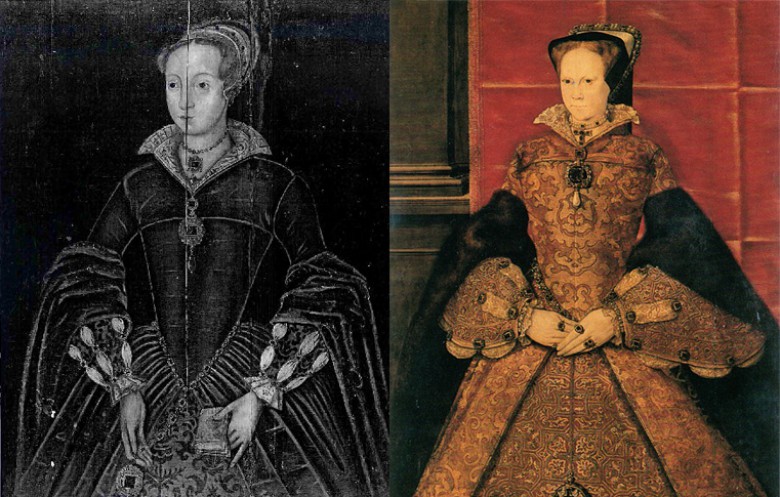3rd August 2017

It was on this day in 1553 that Mary I, daughter of Katherine of Aragon, entered London as queen to begin her rule. Mary had successfully seen off an attempt to install Jane Grey on the throne and became the first woman to be crowned a ruling queen of England.
This was not the only challenge Mary had faced in her life. Her father had gone to great lengths to annul his marriage to Katherine and remarry. Mary was declared a bastard and removed from the line of succession to make way for Henry’s children with his second wife Anne Boleyn to be his legitimate heirs. She was told she was no longer a princess, and would be styled ‘the Lady Mary’. Her household was dissolved and Mary was ordered to serve her new half-sister Elizabeth. While some of Henry’s later wives would attempt a reconciliation between father and daughter, Mary had been treated harshly and had a difficult and often lonely life. To finally be proclaimed as queen and embraced by her people would have been a hugely successful moment for Mary. Her triumphant entrance into London was a contrast to the silent crowd that had greeted Jane Grey when she had been proclaimed queen less than a month previously.
Jane was now a prisoner in the Tower, and must have been able to hear the celebrations of the people. Mary’s arrival meant that decisions would be made about the fates of Jane and the others involved in the attempt to make her queen. The leader of the attempt, the Duke of Northumberland, was quickly executed, but Jane was kept imprisoned and was found guilty of treason – the penalty for which was death. Mary, however, did not want to execute her young cousin and it appeared that Jane would be spared.
But the hopeful start to Mary’s rule did not last. She began marriage negotiations with Philip of Spain – a match that proved to be hugely unpopular in England. Mary may have been the ruling queen, but Tudor society held that a woman could not be set above her husband and there was fear that if the marriage went ahead, England would be ruled by a Spaniard. An uprising followed, of which Jane’s father was a conspirator. His actions forced Mary’s hand and Jane was condemned to die.
Mary, however, gave her cousin one last chance to save herself and convert to the Catholic faith. But Jane was equally as fervent about her Protestantism as Mary was about her Catholicism and would not convert. Jane died a Protestant martyr.
Despite it being unpopular, Mary’s marriage to Philip went ahead, but it did not provide the Catholic heirs that Mary so hoped for. Two false or failed pregnancies also hurt her reputation, and no doubt caused great personal sorrow for Mary.
The break from Rome under her father’s rule had also meant the break-up of her parents’ marriage and her happy childhood. Her attempts to turn England back to Catholicism led to the execution of hundreds of Protestants and her eventually becoming known as ‘Bloody Mary’ – despite the fact that she executed far fewer people than Henry VIII.
Mary died childless, meaning her half-sister Elizabeth became queen. Elizabeth had no doubt learned much about how to be a female monarch from her sister – perhaps her choice not to marry was in part due to Mary’s disastrous marriage.
In my upcoming book The Last Tudor, it is through Jane that we hear about Mary's momentous procession through London on 3rd August, 1553.
'I try not to be distracted by a tremendous noise from the city, cheering and trumpeting and church bells ringing. I sharpen my quill and turn the page of the Greek grammar that I am studying. Now I can hear the yelling of the apprentices and women shrieking with joy. I don’t go up on the walls to look down; I can imagine what all the fuss is about. I don’t really want to see my cousin entering London through Tower Gate in triumph and releasing her favourites from prison. I just hope that she sends for me soon.’
The Last Tudor will be available next Tuesday, 8th August. Pre-order it here: https://goo.gl/mbXrEx
Images: Jane Grey – the 'Houghton Jane', by unknown artist, c.1590, via Wikimedia Commons; Portrait of Mary I of England, Hans Eworth, 1554, Society of Antiquaries of London LDSAL 336, via Wikimedia Commons
